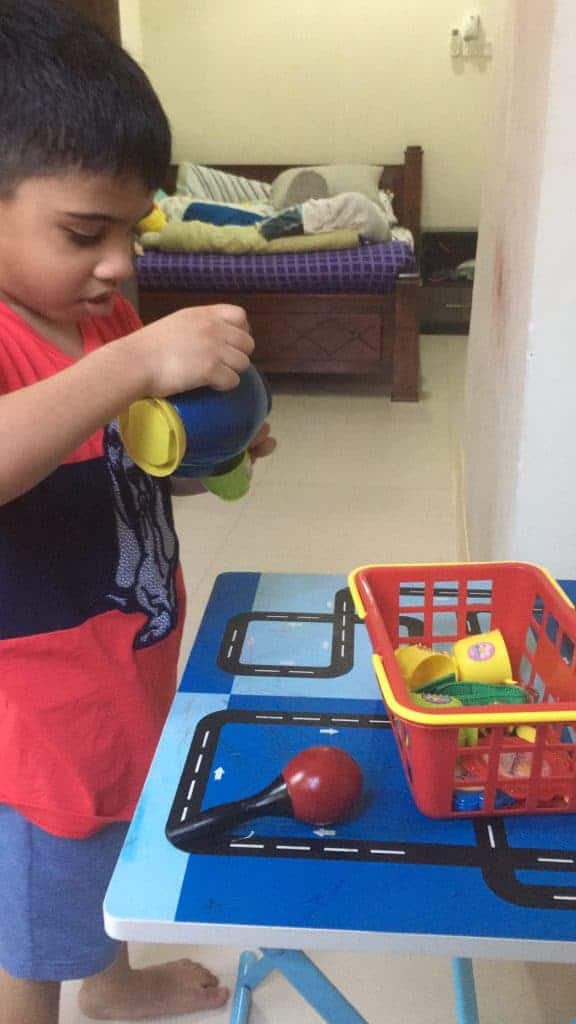“We need to enter their world and show them the way out,” said Raun K Kaufman, the first to benefit from the Son-Rise Program.
Son-Rise is an approach used successfully for individuals with autism ranging from children to adults. The Son-Rise Program sees autism as a social-relational disorder, not a behavioural issue. A positive attitude and the belief that “our child can achieve more” is key to practicing the Son-Rise techniques. Take the cue from your child – observe them, play with them and only when they are ready, use their motivation to teach them skills.
Initially, I was rather skeptical about the programme. However, after attending a workshop by Embrace Autism (a Singapore based NGO) and a talk by Raun Kaufman (his parents founded the programme,) I made the decision to join the Son-Rise Start-Program in Malaysia conducted by Raun Kaufman and Kate Wilde.
Since then, my family and I have tried our best to implement the techniques at home with my four year old son with autism. Here are some techniques that we found easily implementable:
1. Joining your child the Son-Rise way
Join our children in their world! Yes, as controversial as it sounds, this has worked for me. Instead of stopping our child’s self-stimulating behaviours or stims (referred to in the programme as “isms”) the Son-Rise method invites us to join them. If your child enjoys jumping up and down, or flapping, or spinning – join them! It would be best if you did this with the same level of excitement as them. Why? To get their attention, increase eye-contact and joint attention. However, you should not join any activity that is harmful or inappropriate.
My son loves jumping on the bed. So, I jumped up and down on the floor, facing him. We had so much fun together, he looked at me the whole time, laughing gleefully. After jumping up and down for about ten minutes, he sat down with me to complete three puzzles.

2. Identify “Button Pushing”
All children (neurotypical and atypical) push our buttons all the time. Kate Wilde, in her book “Autistic Logistics,” writes a whole chapter on identifying “button pushing” and overcoming it. The first clear sign is when our child looks for our reaction after doing or saying something. They may smile, look at you or some may announce that they are doing something which they know you do not encourage. How do we overcome this? Do not react. But do not ignore completely either. Tell them that their actions do not bother you. My son developed an interest in pinching. Initially, I would scream in pain or scold him. So, I changed my reaction. As he pinched me, I just said, “You know Haans, I don’t know why you are doing this. It really does not bother me.” Naturally, he pinched me harder and continued looking for a reaction. I remained calm (as hard as it was) and did not react despite the pain. Eventually, he stopped and he has not pinched me since.
3. Reduce control battles
I realised that the most common word I used with my son at home was “no”. We would have battles over what he should not and could not do, take or play with. This would eventually end up with a minor tantrum or a meltdown. Taking one of the best tips for me out of Autistic Logistics, “Remove control battles in your house.”
Part of the Son-Rise approach to help with flexibility is giving control. So, we rearranged our house to ensure that our son could go where he liked without being told “no”. By doing this, he seemed happier and in the instances where we did say “no,” he understands that we meant it.
4. Non-negotiable boundaries
While the approach sounds like we give in all the time, it helps us to set boundaries too. Setting non-negotiable boundaries are important, but the parents play the most important role here. My son had a habit of flooding our kitchen with water from the sink. Instead of scolding him repeatedly, we fixed an additional point below the sink to cut off the supply to the tap. He no longer goes to that sink anymore. We also installed a custom-made gate to our kitchen and at the staircase. This way, he would understand the boundaries of not going to certain places without us having to reprimand him.

5. Zero screen time
We went from having the tv on all day long with some intermittent use of mobile phones to zero screen time in a span of a day. Yes, the approach recommends complete elimination of screen time. Since Son-Rise sees autism as a social-relational disorder, human contact is highly encouraged, therefore, the parents need to be the center of attention for the child. Furthermore, it would be impossible to join a child who is too fixated on a screen. The idea is for us to join them in their world, connect with them, and help them communicate better when they are ready. A screen or gadget is a deterrent to that.

There are many more techniques in the programme. There are also workshops organised by Embrace Autism and by the Autism Treatment Center of America or ATCA (the birthplace of Son-Rise). If you wish to try out their techniques, I recommend reading “Autism Breakthrough” by Raun Kaufman and “Autistic Logistics” by Kate Wilde.
Contributor Desiree Kaur previously wrote My Story: Beginning My Journey With a Special Needs Child and My Story: Seeing the Beauty in their Uniqueness.
This article is based on the contributor’s own experience with the Son-Rise Program. It does not necessarily represent an endorsement by makchic.





